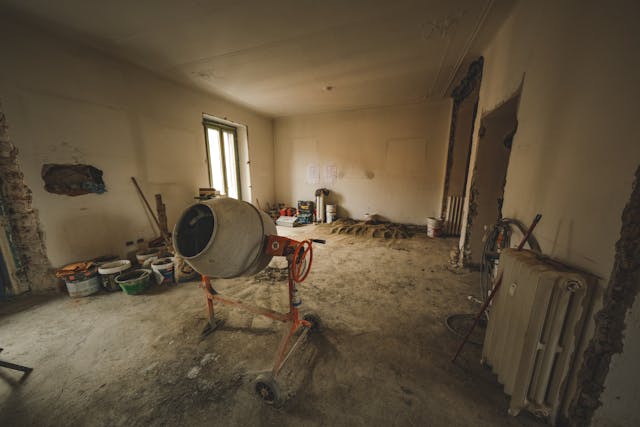Preparing Your Workplace For Refurbishment: What Is Involved?
As businesses evolve and adapt to changing needs and trends, it’s often necessary to refurbish the workspace to accommodate growth, improve efficiency, or enhance the overall aesthetic. However, refurbishing a workplace is not a task you should take lightly. It requires careful planning, coordination, and preparation to ensure a smooth transition and minimise disruptions to daily operations. This article will explore the essential steps to prepare your workplace for refurbishment in the UK and help you provide an excellent space for your business and employees to thrive.
Assess Your Needs
Assessing your needs and objectives is crucial before embarking on the refurbishment process. Consider why you are refurbishing your workplace and what you hope to achieve. Are you looking to create more collaborative spaces, upgrade outdated infrastructure, or improve energy efficiency? You can tailor the office fit out project to meet your specific requirements by clearly defining your goals.
Create a Budget
Refurbishing a workplace can be a significant investment, so it is essential to establish a realistic budget from the outset. Consider factors such as construction costs, furniture and equipment expenses, and any potential unforeseen expenses. Work closely with your finance team to ensure your budget aligns with your financial resources and business objectives.
Plan the Timeline
Effective planning is key to minimising disruption during the refurbishment process. Create a detailed timeline that outlines each phase of the project, from initial planning and design to construction and completion. Be sure to factor in any potential delays or unforeseen challenges to avoid falling behind schedule. Communicate the timeline with all relevant stakeholders, including employees, contractors, and suppliers, to ensure everyone is on the same page. You also want to keep the timeline updated, especially when problems occur that delay progress, so people can see when the work is expected to be complete.
Communicate With Employees
Open and transparent communication with employees is essential throughout the refurbishment process. Keep your team informed about the upcoming changes, including the timeline, scope of work, and how it will impact their day-to-day activities. Address any concerns or questions they may have and involve them in the decision-making process where appropriate. Keeping employees informed and engaged can foster a sense of ownership and support for the refurbishment project.
Design The Layout
The layout of your workplace plays a significant role in productivity, collaboration, and employee well-being. Work with an experienced designer or architect when designing your office to create a floor plan that maximises space efficiency, promotes workflow optimisation, and reflects your brand identity. Consider natural light, ventilation, acoustics, and ergonomic furniture to create a comfortable and inspiring work environment.
Declutter & Organise
Before the refurbishment begins, take the opportunity to declutter and organise your workspace. Clear out any unnecessary items, such as old furniture, equipment, or paperwork, and donate or recycle them where possible. Organise essential documents and belongings to streamline the transition process and make it easier to access during the refurbishment. Starting with a clean slate can create a more efficient and productive workspace. Depending on how many things you have, you may also need to put things into storage until the refurbishment is complete so there is enough room to work in your office space.
Arrange Temporary Accommodations
Depending on the scope of your refurbishment project, you may need to arrange temporary accommodations for employees during the construction phase. Consider options such as remote work, temporary offices, or flexible work schedules to minimise disruptions to productivity and morale. Communicate the temporary arrangements with employees well in advance and provide any necessary support or resources to facilitate a smooth transition.
Implement Health & Safety Measures
Safety should always be a top priority when refurbishing a workplace. Conduct a thorough risk assessment to identify potential hazards or safety concerns associated with the refurbishment project. Implement appropriate health and safety measures, such as signage, barricades, and protective barriers, to minimise the risk of accidents or injuries. Train and support employees to ensure they are aware of and adhere to safety protocols throughout the refurbishment process.
Coordinate with Contractors
Effective coordination with your contractors and suppliers ensures the refurbishment project stays on track, within budget, and with as few problems as possible. Select reputable contractors with experience in commercial refurbishments and clearly define expectations, timelines, and deliverables from the outset. Maintain regular communication with contractors to address any issues or concerns that may arise and monitor progress closely to ensure quality and compliance with regulations.
Preparing your workplace for refurbishment requires careful planning, coordination, and communication. Following the points listed above and monitoring progress can ensure a successful and seamless refurbishment process. Investing in your workspace improves aesthetics and boosts productivity, morale, and employee satisfaction, laying the foundation for long-term success and growth. When you are refurbishing your workplace, with careful planning and consideration, you can make it a smooth transition and ensure it positively impacts your employees and business.

